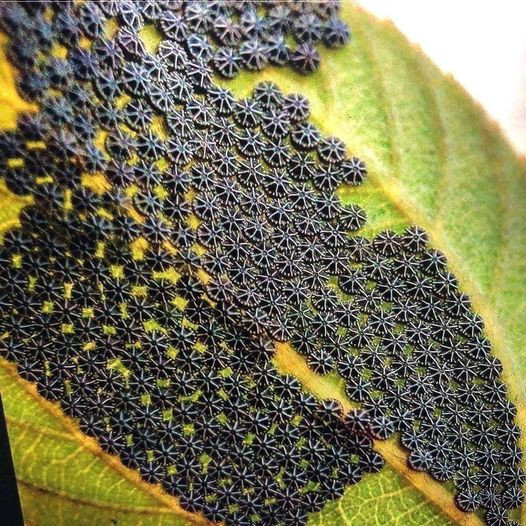Dоn’t Тоuсh Тhеsе If Yоu Sее Тhеm оn Yоur Рlаnts

Let’s start by discussing the eggs. These eggs on a leaf were seen in close-up in the picture I saw. They resemble a thin layer of fine black lace that has been applied to the surface. After you get over your initial sh.ock, it’s actually rather lovely. Clusters of eggs are laid, and each small egg is a marvel of flawless geometry. “This is either going to be really good for my garden or really bad,” was my initial thinking upon seeing it.
Fortunately, there is good news: the Nymphalis Antiopa butterfly has several uses. Although the caterpillars, or larvae, eat leaves, they usually have a preference for willows, elms, and poplars among other trees and shrubs. Therefore, you should be safe if you have a garden that is full of veggies and flowers. Since these butterflies also feed on decaying fruit and aid in the process of decomposition, they can really be quite beneficial.

It’s interesting to watch these butterflies go through their entire cycle. The caterpillars emerge from those weird, complicated eggs once they hatch. Their bodies are bristly and spiky, and they are black with tiny white dots. They go through a series of phases called instars, during which they grow larger and lose their skin.





